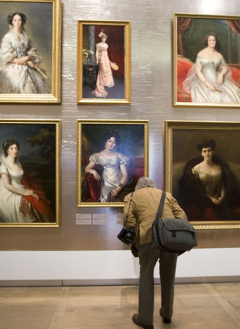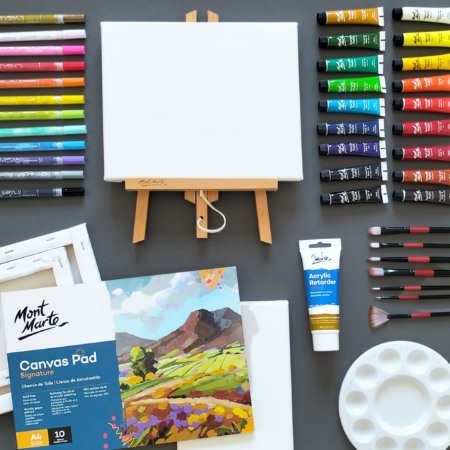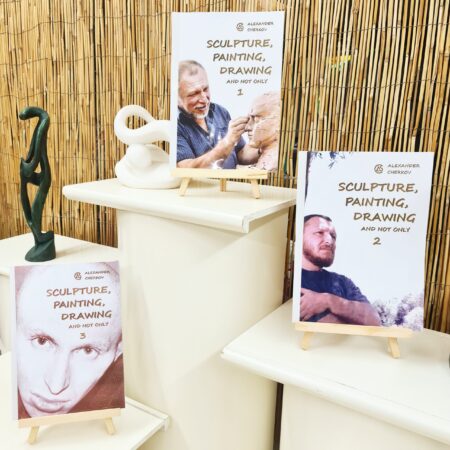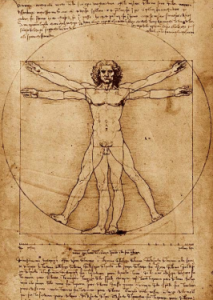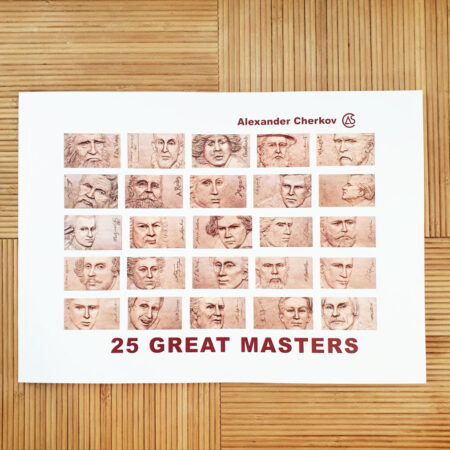On the Conception by Alexander Cherkov, from the book Introduction to the World of Art "Sculpture, painting, drawing and more"
The place of perception in the pyramid of creativity
Each of us has often been addressee (viewer / listener / reader) of works of art. Less often we are required to play the role of an art critic, determining the merits and demerits of works of art. to be theAmen - sculptor or painter (Executed) Went out to a small part of us. And finally to receive the recognition of a master, ecreator Of original works of art is the property of only a select few.
But is it really so?
During my practical teaching, I got to watch again and again how beginners in art studies rush to climb to the top of this pyramid to become an artist, I myself was like that. However, following lengthy observations, I have come to the conclusion that the artists - the creators of the art - are actually at the base of this pyramid, and the recipient is the one at the top. For, as is well known, a work of art becomes such only in the head (or heart?) Of the viewer, reader or listener. When without the presence of a recipient - the work will be nothing more than a canvas with colors, a paper package with letters printed on it or vibrations of sound waves in the air…
In this way, this pyramid can be represented as follows:

The road to the peaks of perception
From this structure comes the conclusion: to get to the top of the concept in art one has to go through all the stages of the pyramid. Otherwise, "we will look and not see, hear and not listen, read and not understand." That is, in painting we see colors and not images, in music we hear sounds and not harmony, in books we read words and not meanings. This finding is paradoxical at first glance, and changes from end to end the prevailing view that seeing / hearing / reading art anyone can, while creating art - only a handful of virtues are capable of.
In fact, it is precisely the creative ability that is at the basis of a person's abilities. We are told that the Creator created man in his image. what is the meaning? The Creator has two arms and two legs, like ours? Does he have a head with two eyes like us? In my opinion, this means that man does not resemble God in any way other than the ability to create. Being an artist (creator) for man is a simple and natural matter similar to breathing or walking on two legs. Every child knows this, but unfortunately, "forgets with age." However, based on the ability of the work alone, without knowing and mastering performance techniques, and without any development of critical thinking but using only intuition, our viewer-listener-reader will be able to grasp only the surface layer of the work of art, reducing his perception of the work within limits Of "Motza Chen - Not Motza Chen".
However, it would be a mistake to believe that the path to the top of the pyramid, in which a recipient of the work of art has a developed perception, is of a consistent nature. That is, I do not think that a person with creative ability who progresses in the path of his development as an artist, will be a good performer, and then further down his path, will rise to the level of a critic, and finally reach the top of the pyramid. In this case the picture would look like this: a small creator (embryo) becomes a small performer, then evolves into a small visitor and eventually ascends to the top of the pyramid as a small recipient of art.

Perception development as a goal of creative growth
I mean something else. The artist (and we proceed from the premise that every person is such), who applies performance skills and develops critical thinking, “grows” and rises to the top of the pyramid of perception.

Yet this problem (remaining a "small recipient of art") still exists. Even while working with children (and no less later, when working with adults), I noticed how easily an artist at the beginning of his career sacrifices his initial creativity in order to master the complexity of performance skills as quickly as possible. It also just as easily abandons the "exhausting" way of learning, after tasting the power of critical thinking. But upon reaching the top of the pyramid, the developed recipient will be able to express himself as a critic, performer, and creator of a work of art in a much more complete way. The creative potential of man is strengthened in the process of expansion and deepening of perception. This is exactly what I see as my main goal, which is achieved by training professional rules and technical methods of the arts, as well as developing constructive critical thinking.
The perception and role of the teacher
Among the participants in my workshop, there are quite a few artists who themselves teach students, to whom they pass on their personal experience. In conversations with them, I noticed that perception - can not be taught. It develops along with the artist moving along his creative path. As part of taking responsibility in teaching others, one must be very careful with the initial creativity of the students. In order not to "step on" the student and not to "trample" on his creative independence, the teacher must remain "behind" his apprentice, not to lose by his authority and experience the student's purpose.
Like a mother, teaching her son his first steps.
Or like Stalker, in Andrei Tarkovsky, Who goes after the people who put their lives and destinies in his hands.
Recommended art products
-
- out of stock
Natural clay sculpture kit
- ₪170
- Read more
-

